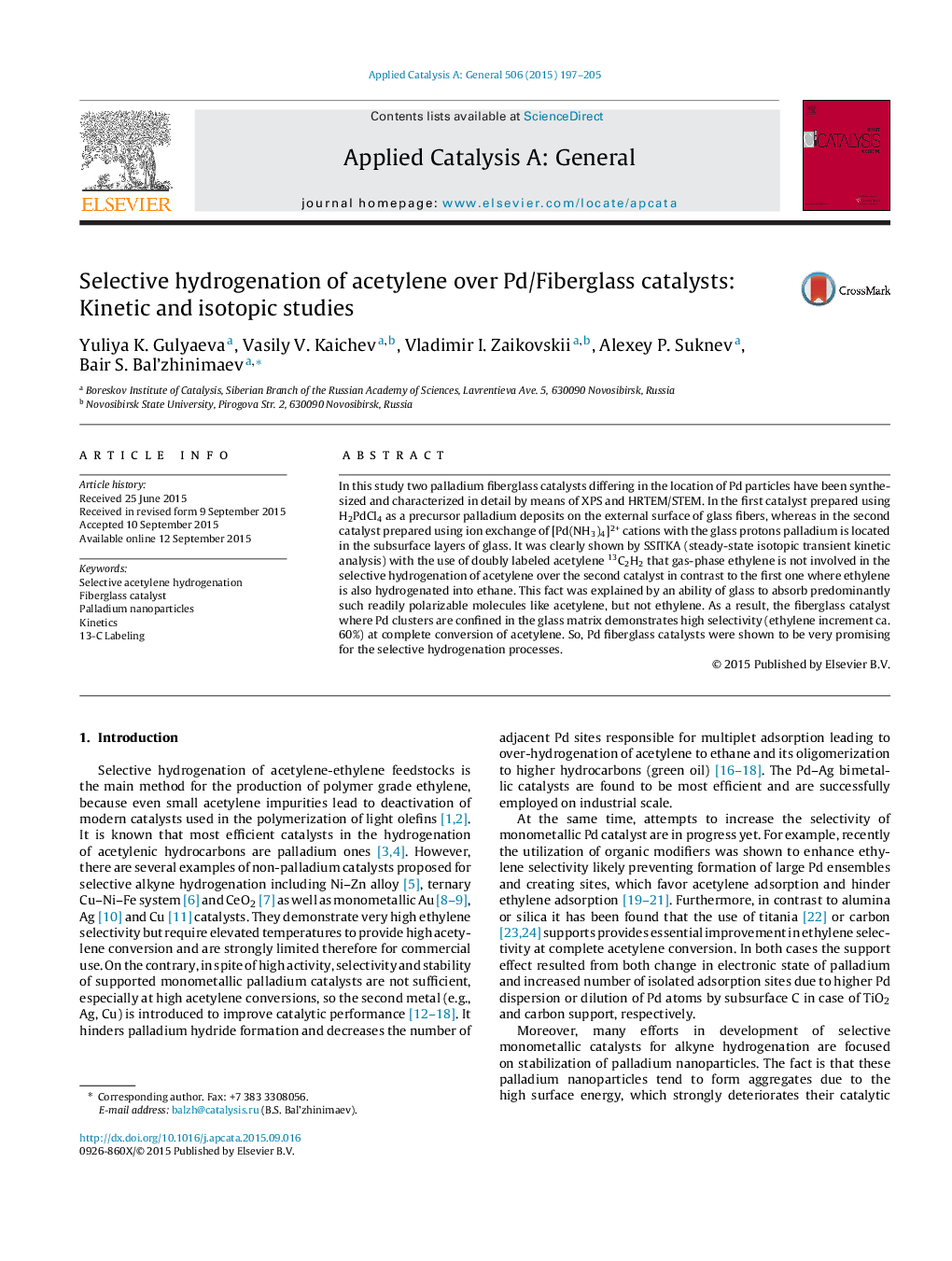| Article ID | Journal | Published Year | Pages | File Type |
|---|---|---|---|---|
| 39059 | Applied Catalysis A: General | 2015 | 9 Pages |
•Pds nanoparticles are deposited on fiberglass surface from H2PdCl4 precursor.•1–2 nm Pdv clusters are confined in fiberglass bulk via [Pd(NH3)4]2+ ion exchange.•Unlike Pds, the Pdv clusters show high selectivity in the hydrogenation of acetylene.•SSITKA study using 13C2H2 showed that ethane is formed from acetylene only.•Gas-phase ethylene is not involved in the hydrogenation reaction at all.
In this study two palladium fiberglass catalysts differing in the location of Pd particles have been synthesized and characterized in detail by means of XPS and HRTEM/STEM. In the first catalyst prepared using H2PdCl4 as a precursor palladium deposits on the external surface of glass fibers, whereas in the second catalyst prepared using ion exchange of [Pd(NH3)4]2+ cations with the glass protons palladium is located in the subsurface layers of glass. It was clearly shown by SSITKA (steady-state isotopic transient kinetic analysis) with the use of doubly labeled acetylene 13C2H2 that gas-phase ethylene is not involved in the selective hydrogenation of acetylene over the second catalyst in contrast to the first one where ethylene is also hydrogenated into ethane. This fact was explained by an ability of glass to absorb predominantly such readily polarizable molecules like acetylene, but not ethylene. As a result, the fiberglass catalyst where Pd clusters are confined in the glass matrix demonstrates high selectivity (ethylene increment ca. 60%) at complete conversion of acetylene. So, Pd fiberglass catalysts were shown to be very promising for the selective hydrogenation processes.
Graphical abstractFigure optionsDownload full-size imageDownload high-quality image (234 K)Download as PowerPoint slide
